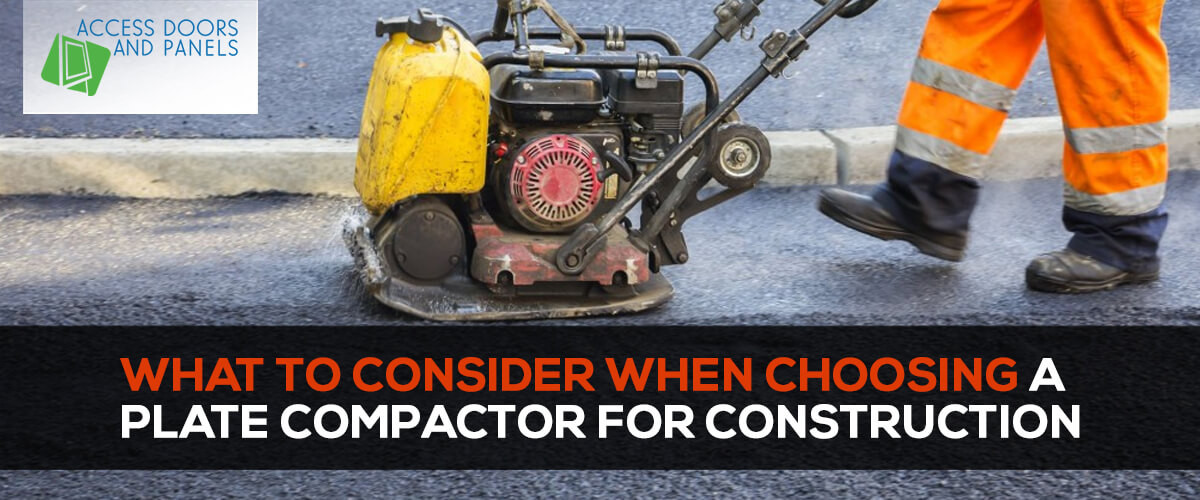What to Consider When Choosing a Plate Compactor for Construction
Posted by Access Doors and Panels on 21st Apr 2021
Choosing the right plate compactor for your project will significantly impact its lifespan. The right compactor used for the correct setting will help ensure that the project proceeds smoothly and prolongs its longevity. The right compaction equipment is the kickoff in making a sound and well-founded project.
When building a project, soil, asphalt, and concrete's proper compaction increases the structure's load-bearing ability and prevents contraction, expansion, and seepage. If not done correctly, it can cause cracked drywalls, potholes, poor drainage, and other problems that will eventually affect your work quality. Consider these points first before proceeding.
To learn more about Drywalls, you can check this article, "Tips for Drywall."
What Kind of Plate Compactor Suits Your Project?
A Plate Compactor falls on one of these three categories:
- Single Plate Compactor - this compactor only goes in one direction. Arguably the most popular choice for small projects.
- Reversible Plate Compactor - this compactor goes both ways, forward and reverse, hence the name. Some can also operate on hover mode.
- Heavy-Duty/High-Performance Plate - this compactor is for deeper or sub-based compactions.
Features of the Plate Compactor
The plate's geometrical feature will affect the ease of your work when you get to tight places. Curved plates are easier to maneuver and prevent the plate from gouging the asphalt. You can identify a curved plate by inspecting the underside of the plate from center to edging. You will be able to see that it is slightly curved.
Another feature that you should look out for is a swinging handle. Depending on where the handle is mounted, it can add height and swing range as you go forward. It is a lot easier for the operator to maneuver when the handle is in the center because it's more level and more comfortable in either direction.
The latest feature for newer plate compactor models is the anti-vibration handle. It adds more comfort to the operator as it cuts down the transfer of vibration from the plate to the operator. A central-mounted handle will add more comfort as it is easier to maneuver on the asphalt and is less likely to damage any material.
The other thing that you should consider is if the plate compactor has a water tank. This aspect might not sound that important, but it is a crucial point. The water from the tank creates a barrier between the hot asphalt and the cold compaction plate. This barrier prevents the plate from sticking to the asphalt.
Maintenance
Good maintenance is critical for savings. There's a lot of money that you can save if you don't need to replace your equipment frequently. Consult with your professionals as often as possible. Additional knowledge will not hurt and will serve you in the long run. It will also help if you read the manual and follow the instructions written before doing anything.
If you have a team, it will also help if you invest in some training and education. It may be expensive, but it will benefit you and your business. Invest in your team's education on handling your equipment, and it will pay off in the long run.

